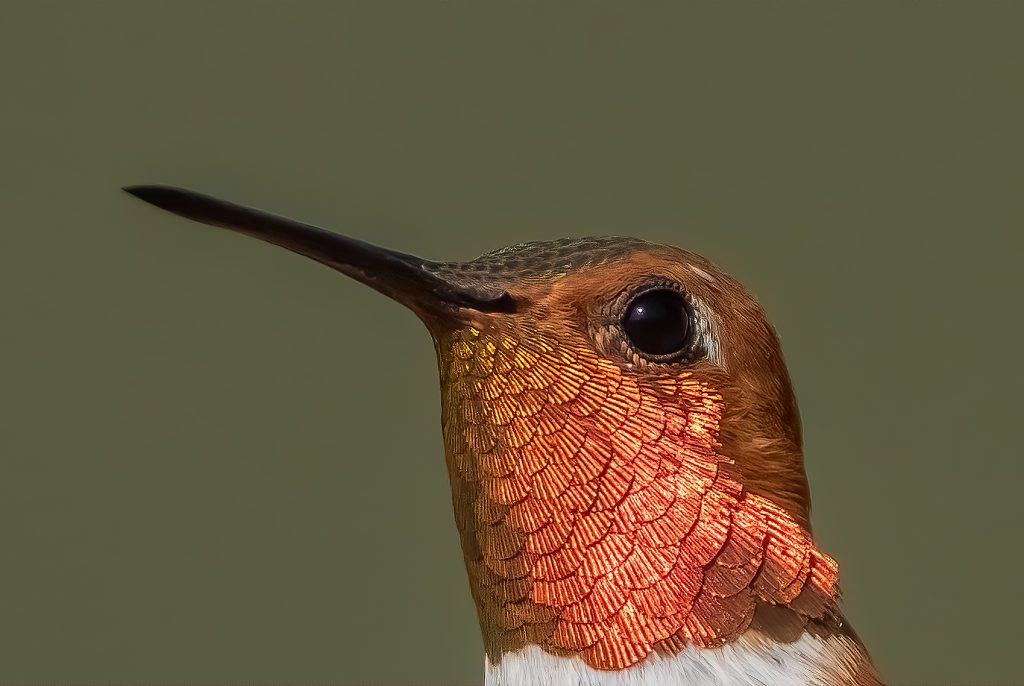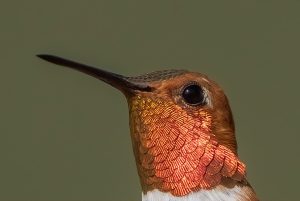Get Wild: The joys of summer hummers
Get Wild

Richard Seeley/Courtesy photo
One of my favorite joys of the summer months is watching our amazing hummingbirds. The broad-tailed hummingbirds arrive around May 1. We often have wintery weather during the month of May, so it is mind-boggling that they can survive and thrive then. The broad-tailed hummingbird is all of 3 to 3.5 inches long and weighs 0.1- 0.2 ounces. How can they survive Summit County May temperatures?
The sugar water in my feeders helps, but hummingbirds have incredible abilities to survive in cold weather, by slowing down their metabolism and going into torpor, which is like “hibernation-lite,” through a cold night. Nectars and sugar water gives them energy. They also feed on insects for needed protein.
There are recent studies in California showing how hummingbirds are evolving to live where people put out hummingbird feeders. They are also known to come back to the very same place each summer. So, is my feeder the same one they were feeding on last summer?
Feeding birds is tricky because it is not legal or safe to feed any of our mammals, and who doesn’t like sugar? Bringing in those hummingbird feeders or seed feeders at night is a safe way to keep the mammals away, especially bears and raccoons. Then get up early and replace the feeders — all those birds are probably up and active before you wake up.
I think hummingbirds deserve my careful feeding, replacing feeders as they run out and cleaning to prevent mold. After all, they travel thousands of miles to get here from Mexico and South America each spring. Could any of us find our way from a winter home to a summer home 3,000 miles away (without modern machinery and technology)?
The broad-tailed hummingbird is iridescent green above with greenish or buffy sides and a white chest and belly. Adult males have a magenta throat patch (gorget). Females have a plain, white-spotted throat. Their tails are “broad” when they take off and fly, but not while sitting on a feeder.
All hummingbirds have tiny structures on their feathers that capture, bend and reflect sunlight, creating incredible color changes with small movements. The eye-catching feathers of males are thought to be successful in attracting mates, and these colorful changes have been passed down through time. Hummingbirds are the only birds that fly backward and straight up and down. The males use fast, impressive flight, going as much as 100 feet up, then accelerating up to 50 mph down, flashing their bright magenta gorget toward a female.
Rufous hummingbirds arrive later in the summer. My first sighting this year was June 30. As the late comers, they behave very aggressively to find a mate and nest in the remaining summer. The colorful male rufous has a white breast, coppery or rufous-colored face, sides and tail with an iridescent orange-red throat or gorget.
Hummingbirds build their well-camouflaged tiny nests commonly in the fork of a bush branch, so they are very hard to find. The females incubate the eggs for over two weeks, then the hatchlings are cared for in the nest for over two weeks before fledging the nest. Then they will have another few weeks before they migrate. They need to gain 25-40% of their body weight to make the long trip over land and water. The adult males leave first. The females and young leave later.
We are so fortunate to have such amazing birds. Let’s be thankful and help our birds survive into the future. Turn lights off at night or at least downcast, so they don’t distract all of our migrators, tiny and large.
“Get Wild” publishes weekly in the Summit Daily News. Karn Stiegelmeier is a volunteer wilderness ranger for the Eagle Summit Wilderness Alliance, an all-volunteer nonprofit that helps the U.S. Forest Service protect and preserve the wilderness areas in Eagle and Summit counties. For more information, visit Wild4ESWA.org


Support Local Journalism

Support Local Journalism
As a Summit Daily News reader, you make our work possible.
Summit Daily is embarking on a multiyear project to digitize its archives going back to 1989 and make them available to the public in partnership with the Colorado Historic Newspapers Collection. The full project is expected to cost about $165,000. All donations made in 2023 will go directly toward this project.
Every contribution, no matter the size, will make a difference.








